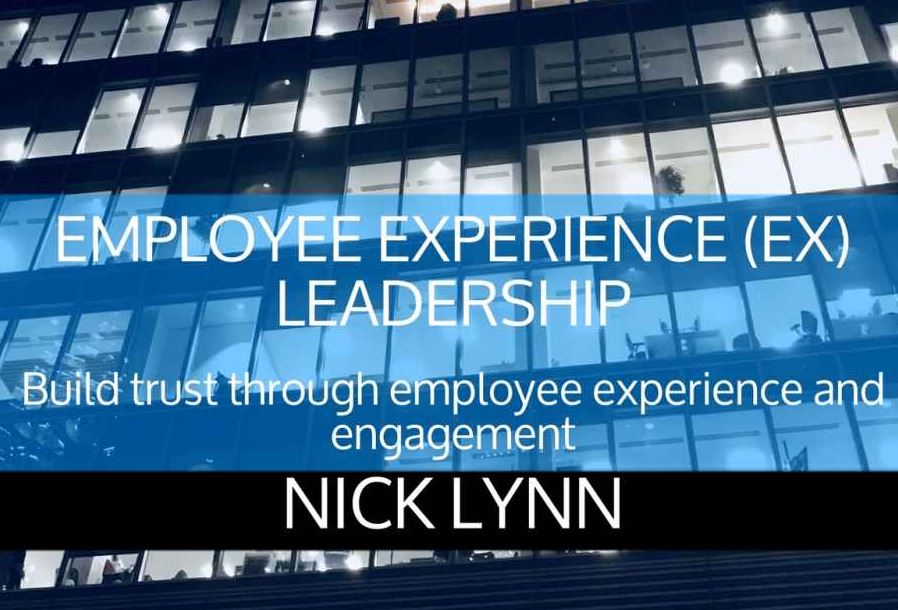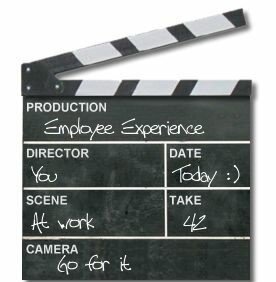
Purpose is high on the agenda for many business leaders. As has been widely reported, for example, even the Business Roundtable group of CEOs has started to talk about organisational purpose and values. This replaces their long-held convention of “shareholder primacy” and is seen as a big shift in thinking.
In part, this is a reaction to low trust and confidence, especially in the long wake of the financial crash and numerous corporate scandals. Many people also worry that in the future, with trends such as cognitive automation and further globalisation, the trust gap that is already prevalent in many companies is only likely to worsen,
Surveying the scene, CEOs like Alex Gorsky of Johnson & Johnson point out that “People are asking questions about how well capitalism is serving society.” IBM CEO Ginni Rometty observes that “It’s a question of whether society trusts you or not. We need society to accept what it is that we do.”
Over time, we will see if this is more than a marketing campaign by this group. I hope it is, because in my experience the best companies do have a focus on creating purpose and meaning at work. In those companies, this is achieved through sustained, practical efforts, rather than by mission statements and the like. And they accelerate progress by adopting an Employee Experience (EX) lens.
“The best companies have a practical focus on creating purpose and meaning at work”
The why of work
First though, a bit of background. One reason CEOs have been persuaded to talk about purpose and values is because of a wave of research in psychology, neuroscience and behavioural economics over the last decade on motivation, emotion and experience.
For example, Barry Schwartz, in his book Why We Work, showed that people get a sense of fulfilment from the work challenge, from social interaction, and from having some control over what they do. Another important factor is finding that what you do is meaningful. One important way of finding meaning is by linking what you do in your job to the welfare of others.
In some professions, such as healthcare or teaching, which are often thought of as vocations, that link to the welfare of others is clear and obvious. But in many jobs it isn’t. So effective leaders inspire employees by making it clear how their job affects others in positive ways.
A common way of doing this is by building a very clear line of sight to the experience of customers. Another way of doing this is by building a strong link to the organisation’s broader mission and vision.
This is a connection that many other authors have highlighted. From the viewpoint of behavioural economics, for example, Dan Ariely in his book Payoff highlights the complexity of motivation, suggesting that if you wrote down an equation to capture why you work, it would involve a very long list of factors, including money, achievement, happiness, a sense of progress, security, legacy, status, and so on.
Ariely criticises many organisations for being stuck in “a factory mode of production” when it comes to thinking about motivation. By this he means that leaders focus on financial rewards, whilst they neglect fundamental social elements such as identity, goodwill, connection and meaning.
Another person who has had a big impact is Daniel Pink. His best-selling book Drive was first published in 2009. In it, he highlights the importance of mastery and purpose in motivating people to perform at their best, which he characterises as a state of flow.
More specifically, he argues that it is the pursuit of mastery that is the most important thing. Pursuit is really a mindset focused on continuous improvement and perseverance towards long-term goals.
Accordingly, when it comes to inspiring leadership, organisations need to focus on what he calls “purpose maximisation”. Successful companies do not chase profit while trying to stay ethical and values-based. Their goal is to pursue purpose and to use profit as the catalyst rather than the objective.
Daniel Pink sets out an evolution in terms of organisations’ focus on motivation, from carrot and stick approaches, to performance-contingent rewards, which is where most organisations still are today, and on to what he calls Motivation 3.0: “The science shows that the secret to high performance isn’t our biological drive or our reward-and-punishment drive, but our third drive – our deep-seated desire to direct our own lives, to extend and expand our abilities, and to live a life of purpose.”
Daniel Pink notes, rather sadly, that the gap between what science knows and what business does is wide and it is not narrowing.
You can see this in the data collected in employee surveys. Most companies have a long way to go. In the UK, for example, only 56 per cent of employees say that leaders provide a vision for their company that is inspiring.
Narrowing the gap is where employee experience leadership (EX Leadership) really comes into play. A key dimension of EX leadership relates to providing purpose and meaning for people at work.
Of course, it’s one thing to point out that purpose matters to people and performance. What differentiates the best companies is that they actually do something about it. That practical application is increasingly achieved by adopting an EX lens.
Overall, the best companies are framing organisational performance in terms of individual experiences. They use EX analytics to ensure they are doing a number of important things well. From an EX point of view, a focus on purpose is actually quite practical and applied.
“From an EX point of view, a focus on Purpose is practical and applied”
Job crafting
For example, when it comes to thinking about jobs, tasks and roles, EX leaders have a focus on encouraging what is sometimes called job crafting.
In job crafting, managers and team leaders are able to provide employees with the authority and space to alter their jobs in such a way as to better suit their skills and interests. Employees are able to make small, but meaningful changes to the scope of their work, and to focus especially on the purpose of their role.
As described by Justin Berg, Jane Dutton, and Amy Wrzesniewski: “Within a formally designated job, employees are often motivated to customise their jobs to better fit their motives, strengths, and passions. Job crafting is a means of describing the ways in which employees utilise opportunities to customise their jobs by actively changing their tasks and interactions with others at work.”
This might mean people taking on more or fewer or different tasks, expanding or reducing the scope of tasks, or changing how they perform tasks and how they interact with others. This can happen in a wide range of work environments. Approaches like Lean and Kaizen, which I would argue have a similar emphasis on empowering operators, have transformed sectors like automotive manufacturing, for example.
It’s also the case that job-crafting is going to become an even more important capability in the future. This is because many companies are looking at the mix of skills and the “skills architecture” that they will need in order to for individuals and teams to continue to be successful in the future of work. For sure, as they undergo digital transformation, they are going to require flexibility and adaptability in crafting purposeful jobs.
“Companies are increasingly focused on the skills mix they will need in the future of work, which makes job crafting even more important”
EX and CX alignment
Another element in providing meaning and purpose is by ensuring there is a clear alignment between employee experience and customer experience (EX and CX).
For all organisations, your employee experience is critical for delivering outstanding customer experiences. Put plainly, it’s not possible to provide a simple and effective customer experience if your internal tools are clunky and hard to use. You’re not going to achieve customer delight if the people dealing with your customers are disengaged. It’s impossible to deliver great service if your employees are unable to exercise their own judgement effectively.
A successful customer experience strategy is the result of your company’s culture and ways of working. How you interact internally within your company will have an impact on external interactions too. As a result, leading companies realise that they have to focus on employees when they try to improve their customer experience.
A positive customer experience is, of course, the responsibility of everyone in the company. But an EX lens can be deployed the most effectively at the points of intersection with your customers: sales reps, success managers, call centres, front-line and field staff, and so on.
“An EX lens can be deployed most effectively at the points of intersection with your customers”
In practice, this can mean linking EX and CX feedback and analytics in order to identify important differences and gaps, and then addressing them.
The single best way to improve both EX and CX is to improve the flow of knowledge. Too often, critical knowledge becomes stuck inside different departments and teams, which act as silos. A key task of EX leadership is to identify and then break these silos apart in order to ensure that information is available to all who need it. This is also a key component in simplifying the way people work and in thinking end-to-end.
EX leadership and trust
EX leadership, then, involves providing a clear sense of purpose through things like job crafting and EX-CX alignment. Of course, this is one leadership component, alongside other things like team learning and personalising communications. Moreover, a critical factor is leaders’ own behaviour and consistency. Doing what you say, builds trust and confidence over time.
Ultimately, that will be the biggest test for the Business Roundtable. In a few years’ time, when people look back at their 2019 Statement on the Purpose of a Corporation, will it be seen as yet more spin? Or will these leaders have demonstrated their own sustained and practical commitment to delivering positive experiences in the organisations they lead?
Connect with me here and on twitter @nickl4 and let me know what you think.
Notes
For more on EX Leadership, you can read my book: Employee Experience (EX) Leadership: Build trust through employee experience and engagement.
The CEO quotes and information on the Business Roundtable come from the 19 August 2019 Fortune article by Alan Murray “New Purpose for the Corporation” which you can find here.
The UK employee survey data here comes from The Global Workforce Study by Willis Towers Watson.
On job crafting, see: Wrzesniewski, A., LoBuglio, N., Dutton, J. and Berg, J. (2013), “Job Crafting and Cultivating Positive Meaning and Identity in Work”, Bakker, A. (Ed.) Advances in Positive Organizational Psychology (Advances in Positive Organizational Psychology, Vol. 1), Emerald Group Publishing Limited, Bingley.
Tags: #Leadership #Purpose #FutureOfWork
This article was first published on LinkedIn on August 28, 2019



